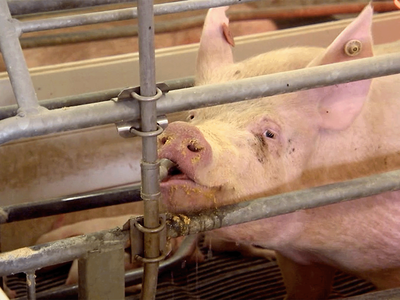Reducing Honeybee Losses
Honeybee researchers say an important tool in reducing honey bee loss is only effective if applied at a very specific time in a hive’s life cycle.
U.S. Beekeepers have been applying oxalic acid in a vapor form to kill mites known as varroa for years. Jennifer Berry, Laboratory and Apiary Manager for the University of Georgia Honey Bee Lab says oxalic acid is very effective, however…
Berry: “ The problem is if there is brood, baby bees inside the colony, half of their life they spend under a protective wax cap. The oxalic acid does not penetrate that wax cap. So the mite is safe inside that cell.”
Berry’s research shows timing is everything when it comes to killing all of the mites in a colony. And that the perfect time is the brood is 21 days old. It’s a message she’s been hoping to send to commercial and backyard beekeepers.
Berry:” Why it’s so important, that day 21 is because all of the capped brood, all the baby bees have emerged. So there is no capped brood, there is no protective wax cap available for those mites to be hiding under. And when we applied oxalic acid we got control. When we applied the oxalic acid when brood was still there, we did not get control.”
Varroa is the main culprit in honeybee loss and it appears to be here to stay.
Berry says while using the organic acid as a miticide is common, she still hears from keepers who apply it at the wrong time.
Berry will talk about her research at the upcoming Georiga Beekeepers Association Fall Conference, September 23-25. The conference will be held in-person and online.
More information about Berry’s talk and others can be found at www.gabeeking.com

















